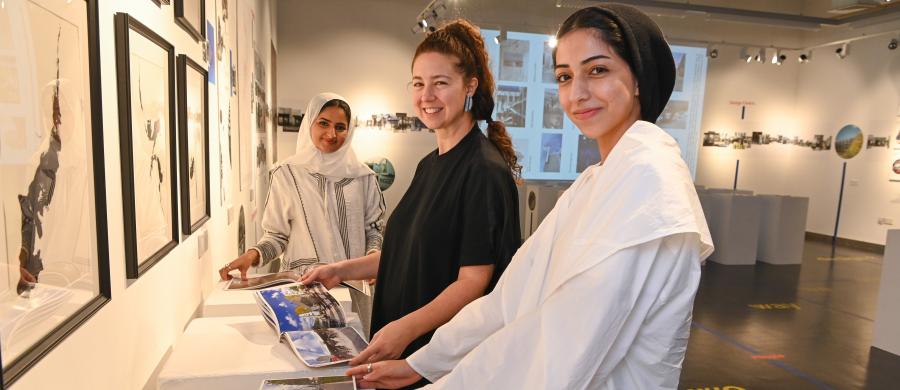- About
- Admissions
- Study at AUS
- Prospective Students
- Bachelor's Degrees
- Master's Degrees
- Doctoral Degrees
- Admission Publications
- International Students
- Contact Admissions
- Grants and Scholarships
- Sponsorship Liaison Services
- Testing Center
- New Student Guide
- File Completion
- New Student Orientation
- Payment Guide
- Executive Education
- Students with Disabilities
- Academics
- Life at AUS
- Research
- Contact Us
- Apply Now
- .

Study tour to Copenhagen inspires creative work by AUS design students
Taking experiential learning to the next level, the College of Architecture, Art and Design (CAAD) at American University of Sharjah (AUS) recently hosted a study tour to one of the world’s top design destinations—Copenhagen, Denmark.
A multidisciplinary group of 14 students drew from their itinerary engaging with some of the city’s most significant design firms, museums, institutions, festivals and venues including 3DaysofDesign festival, the office of BIG (Bjarke Ingels Group), ceramicist Inge Vincents, wood flooring and carpentry manufacturer Dinesen, and The Frederiksberg Cisterns. The result was a stunning exhibition of creative work curated by their instructor, Associate Professor of Architecture and Interior Design Tania Ursomarzo.
“What has made this exhibition particularly interesting is that it was produced by a mixed group of students from different design majors, yet their work output was not typical of what we would see in a specific program such as architecture or design management,” said Ursomarzo.
For Emirati architecture student Salama Obaid Alhammadi, the study tour was an opportunity to grow in philosophical critical thinking. Her research is presented as a multimedia digital book titled Disparity and the In-Between, combining photography, postcards with her written thoughts and ideas captured in real time during the trip, as well as audio recordings of interesting conversations, soundscapes and acoustics, linking them to design theory and philosophy.
“After the first week of observing and taking photos, I noticed a repeating pattern of mixing contrast and combining them in a blurred middle ground. My book reflects on the patterns of contrasts that I observed in the city—growing and decaying, adding and taking away, light and dark, form and function, natural and man-made, old and new,” she said.
Photography by Saudi architecture student Nujud AlHussain explores the concept of memory through a 40-meter continuous composition of digital, film and Polaroid photographs taken during the trip that wraps around the exhibition space. After losing a whole year’s worth of her own photos on the digital cloud, AlHussain sought to address the intangible nature of memory and our inherent need to create tangible evidence of lived experiences.
“This was an awakening for me as I saw the value I place on the need to memorialize my life in pictures. Photography proves that we exist, proves that life actually happened,” said AlHussain.
“I used three different cameras as each one represents a different way in which we capture memory and the different expectations we have for them. For digital I used my phone for instant, in-the-moment results; for polaroid, I felt the anticipation of the photo slowly appearing; and with film, it was a completely blind experience. When the black and white photos were developed they became almost like a treasured ancient memory,” she said.
The photos were then overlaid and stitched together in various opacities representing the way some memories fade while others remain clear, and were placed in chronological order to create a memorial timeline of the tour.
The students affirmed the value of the study tour and noted how the experience has shaped them each individually.
Alhammadi said, “This semester I have been focusing on the relationship between contrasts to enhance spaces experientially. Since visiting Copenhagen, I can see that my own work has been impacted by the Danish design approach to ensure the human experience is always the central focus of my design.”
AlHussain said, “This was such a different experience from normal university study, which can often feel quite prescriptive in terms of following a syllabus. The study tour, in contrast, felt self-directed and gave me the freedom and responsibility to interpret the experience and create something personal.”
CAAD faculty will lead two summer study tours in June 2023, giving students the option to discover design shaped by people, materials and craft in Copenhagen, or explore design and culture in Italy.
For more information about the College of Architecture, Art and Design and its programs, visit www.aus.edu/caad.

